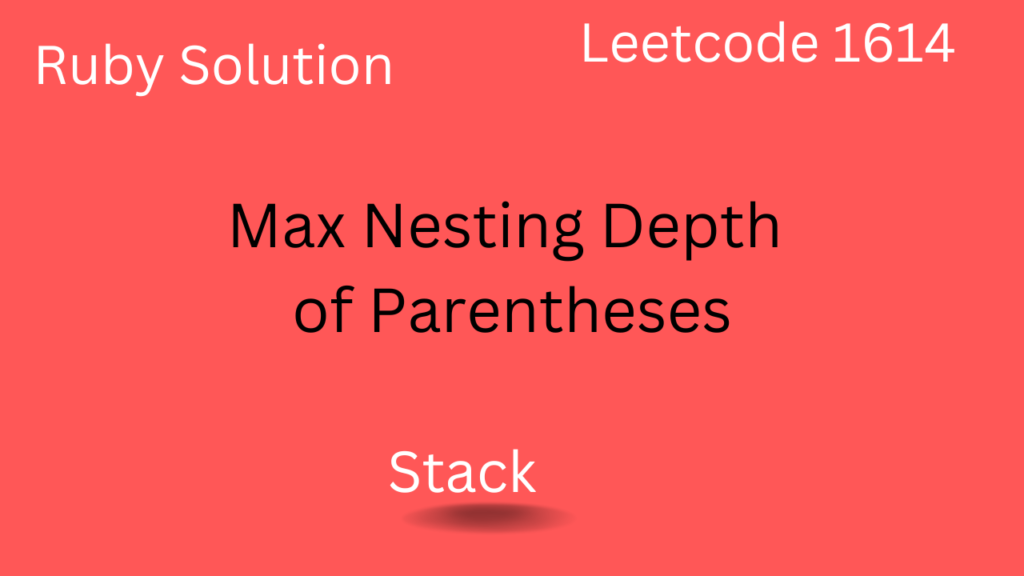
Introduction
- In this article, we will solve Leetcode 1614, which will mainly help us understand how we can use a stack data structure.
- We will also see how we can solve it without a stack data structure
Problem Statement
- We have been given a Valid Parentheses String(VPS) and need to return nesting depth.
- VPS is defined as
>> “” -> empty string
>> it is written as AB, where A and B both are valid VPS
>> (A) -> where A is VPS
Examples
- In the below example, the depth of parentheses is 3 since the digit 8 is nested inside of 3 parentheses.
- Similarly in the second example, nested depth is 3, where 3 is nested parentheses.

Solutions
Intuition
- Intuition is that we iterate through each character of the string and if the character happens to be open parentheses then we add it to our stack.
- When we add open parentheses to the stack, we also check if the current stack size is greater than the max or not. Stack size basically depicts the depth.
- If the character happens to be closing parentheses then we can pop the last open parentheses that we added since it completes our parentheses.
Code
- Below is the code where we are using array as a stack.
# @param {String} s
# @return {Integer}
def max_depth(s)
stack = []
max = 0;
s.split('').each do |c|
if c == '('
stack.push(c)
max = max > stack.size ? max : stack.size
elsif c == ')'
stack.pop()
end
end
max
end
- We can avoid using stack since the only character we are dealing with is open and closing parentheses.
- Instead, we can maintain open parentheses and increment whenever open parentheses encounter and decrease when closing parentheses are encountered.
def max_depth(s)
max = 0;
depth = 0;
s.split('').each do |c|
if c == '('
depth+=1
max = max > depth ? max : depth
elsif c == ')'
depth-=1
end
end
max
end
Result
- Our solution is accepted by leetcode.

Complexity
With Stack
-> Time Complexity: O(N)
-> Space Complexity: O(N)
Without Stack
-> Time Complexity: O(N)
-> Space Complexity: O(1)
Conclusion
- In this article, we used the stack to solve the parentheses problem. This problem is good to start problem to play with the stack data structure.
- We also see how we can make the stack redundant if the data that is stored in the stack are not changing.
Bonus
- If you want to upskill your coding interview game, you can definitely check out this bestseller course ( this is in Java )
